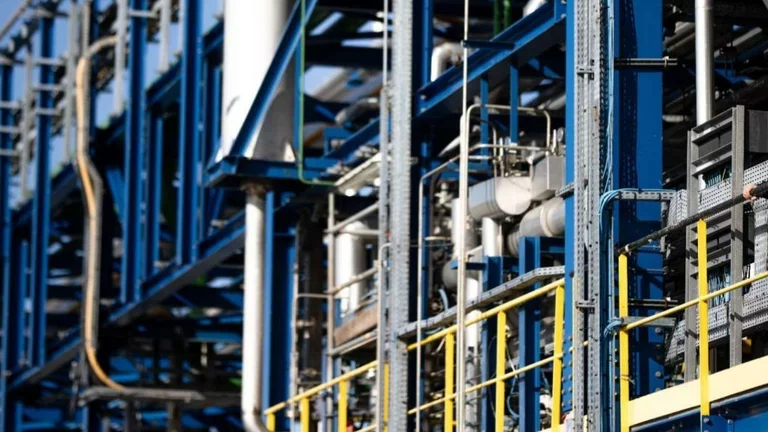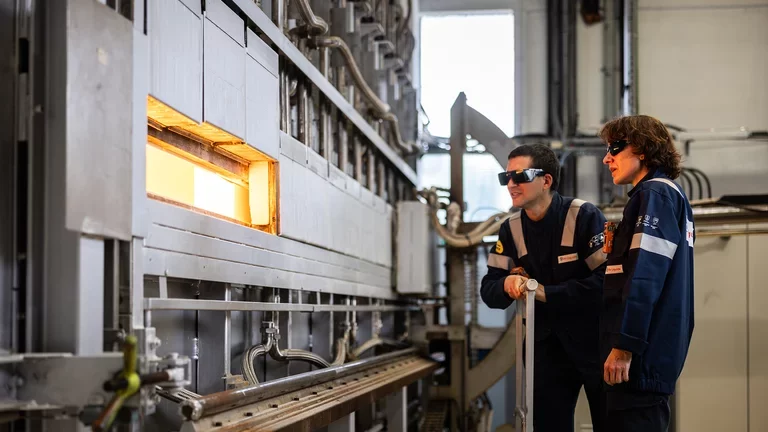Towards Hydrogen!
Discover the potential of hydrogen for the energy transition.
Why hydrogen?
Hydrogen... everybody's talking about it, and for a good reason! With hydrogen, energy transition is accelerating.
Till today hydrogen has been mostly used to make ammonia for the fertilizer industry and to refine petroleum products, including desulfurizing fuels. Hydrogen is also used to manufacture electronic components and for rocket propulsion.
But with energy transition, new hydrogen applications are being developed.
Reducing CO2 emissions of the most carbon-intensive industries, developing sustainable transport... When produced from renewable resources, hydrogen can tackle the carbon emissions of industry and intensive transport, which are responsible for 45% of the planet's CO2 emissions. Decarbonized hydrogen could thus play a decisive role in the fight against climate change.
Curious to learn more ? Check out 7 most frequently asked questions about hydrogen.
Hydrogen: what role in the energy transition?

“Hydrogen is now part of our daily lives and will become an even greater part of those of future generations. Its rapid and joint development on a global scale is a cornerstone of an effective energy transition.
”
Armelle Levieux
Member of the Executive Committee, Vice President of Innovation, overseeing the Hydrogen Energy and Electronics world business lines
Test your knowledge about Hydrogen
What is hydrogen?
False!
Just like iron and copper, hydrogen is one of the 118 natural elements that are known to make up the universe. It is almost always combined with other elements and is practically omnipresent, starting with water or H2O. Lastly, hydrogen is the most abundant molecule in the universe: another important feature that speaks volumes about its potential!
False!
Just like iron and copper, hydrogen is one of the 118 natural elements that are known to make up the universe. It is almost always combined with other elements and is practically omnipresent, starting with water or H2O. Lastly, hydrogen is the most abundant molecule in the universe: another important feature that speaks volumes about its potential!
True!
Just like iron and copper, hydrogen is one of the 118 natural elements that are known to make up the universe. It is almost always combined with other elements and is practically omnipresent, starting with water or H2O. Lastly, hydrogen is the most abundant molecule in the universe: another important feature that speaks volumes about its potential!
Is hydrogen a kind of energy?
Yes, it’s as simple as that!
Not quite…
Unlike an energy source that exists in its natural state (the sun, the wind, etc.), hydrogen is an energy carrier.
Hydrogen can be used to store and transport energy, which is particularly useful when it comes to the transition from a primary energy (found in nature) to final energy (delivered to the consumer).
This means that we need an energy source in order to produce it. That’s why hydrogen is also described as a secondary energy: it’s produced by the transformation of a primary energy. It’s just like electricity.
True!
Not quite…
Unlike an energy source that exists in its natural state (the sun, the wind, etc.), hydrogen is an energy carrier.
Hydrogen can be used to store and transport energy, which is particularly useful when it comes to the transition from a primary energy (found in nature) to final energy (delivered to the consumer).
This means that we need an energy source in order to produce it. That’s why hydrogen is also described as a secondary energy: it’s produced by the transformation of a primary energy. It’s just like electricity.
False!
Not quite…
Unlike an energy source that exists in its natural state (the sun, the wind, etc.), hydrogen is an energy carrier.
Hydrogen can be used to store and transport energy, which is particularly useful when it comes to the transition from a primary energy (found in nature) to final energy (delivered to the consumer).
This means that we need an energy source in order to produce it. That’s why hydrogen is also described as a secondary energy: it’s produced by the transformation of a primary energy. It’s just like electricity.
How is hydrogen produced?
False!
Hydrogen is produced either by water electrolysis or from methane or biomethane by steam reforming or autothermal reforming processes with capture of the emitted CO2.
Hydrogen has historically been produced from fossil fuels... Its future will be resolutely low-carbon and renewable! Our objective is to convert all our carbon-based hydrogen production methods to low-carbon methods as quickly as possible.
False!
Hydrogen is produced either by water electrolysis or from methane or biomethane by steam reforming or autothermal reforming processes with capture of the emitted CO2.
Hydrogen has historically been produced from fossil fuels... Its future will be resolutely low-carbon and renewable! Our objective is to convert all our carbon-based hydrogen production methods to low-carbon methods as quickly as possible.
True!
Hydrogen is produced either by water electrolysis or from methane or biomethane by steam reforming or autothermal reforming processes with capture of the emitted CO2.
Hydrogen has historically been produced from fossil fuels... Its future will be resolutely low-carbon and renewable! Our objective is to convert all our carbon-based hydrogen production methods to low-carbon methods as quickly as possible.
What is hydrogen used for?
False!
Hydrogen has been used for years in many industries. Most of the hydrogen produced today is used to make ammonia (a vital product for the fertilizer industry); it’s also used to desulfurize fuels.Hydrogen is also used for the manufacture of electronic components and rocket propulsion.
New applications for low-carbon hydrogen are being developed, including in carbon-intensive industries (such as steel and glass) and in mobility (car, bus, train, boat, plane powered by hydrogen).
False!
Hydrogen has been used for years in many industries. Most of the hydrogen produced today is used to make ammonia (a vital product for the fertilizer industry); it’s also used to desulfurize fuels.Hydrogen is also used for the manufacture of electronic components and rocket propulsion.
New applications for low-carbon hydrogen are being developed, including in carbon-intensive industries (such as steel and glass) and in mobility (car, bus, train, boat, plane powered by hydrogen).
True!
Hydrogen has been used for years in many industries. Most of the hydrogen produced today is used to make ammonia (a vital product for the fertilizer industry); it’s also used to desulfurize fuels.Hydrogen is also used for the manufacture of electronic components and rocket propulsion.
New applications for low-carbon hydrogen are being developed, including in carbon-intensive industries (such as steel and glass) and in mobility (car, bus, train, boat, plane powered by hydrogen).
What happens to the CO2 captured during hydrogen production?
False!
CO2 can be used in different forms by many industries.
80% of the CO2 sold by Air Liquide is used in the food industry for the carbonation of fizzy drinks and water, to cool, freeze or extend the shelf life of foodstuffs and to stimulate plant growth in greenhouses.
The remaining 20% is used in other industries for various purposes: to enhance the recovery of crude oil from oil deposits, for welding and to protect welding joints from oxidation, as a solvent for industrial cleaning, to calibrate aeronautical and automotive equipment, as a cooling agent in electronics, as a reactive agent in the pharmaceutical industry, for certain medical procedures (laparoscopies, colonoscopies, etc.), for wastewater treatment and in the cement industry.
True!
CO2 can be used in different forms by many industries.
80% of the CO2 sold by Air Liquide is used in the food industry for the carbonation of fizzy drinks and water, to cool, freeze or extend the shelf life of foodstuffs and to stimulate plant growth in greenhouses.
The remaining 20% is used in other industries for various purposes: to enhance the recovery of crude oil from oil deposits, for welding and to protect welding joints from oxidation, as a solvent for industrial cleaning, to calibrate aeronautical and automotive equipment, as a cooling agent in electronics, as a reactive agent in the pharmaceutical industry, for certain medical procedures (laparoscopies, colonoscopies, etc.), for wastewater treatment and in the cement industry.
False!
CO2 can be used in different forms by many industries.
80% of the CO2 sold by Air Liquide is used in the food industry for the carbonation of fizzy drinks and water, to cool, freeze or extend the shelf life of foodstuffs and to stimulate plant growth in greenhouses.
The remaining 20% is used in other industries for various purposes: to enhance the recovery of crude oil from oil deposits, for welding and to protect welding joints from oxidation, as a solvent for industrial cleaning, to calibrate aeronautical and automotive equipment, as a cooling agent in electronics, as a reactive agent in the pharmaceutical industry, for certain medical procedures (laparoscopies, colonoscopies, etc.), for wastewater treatment and in the cement industry.
End of the quiz!







